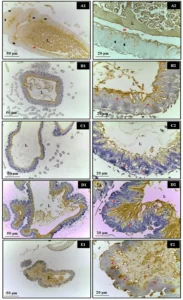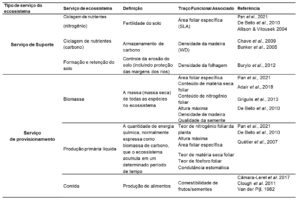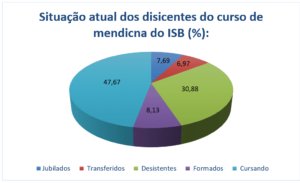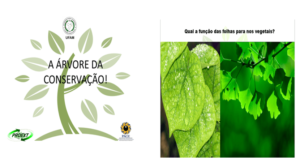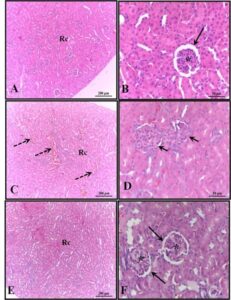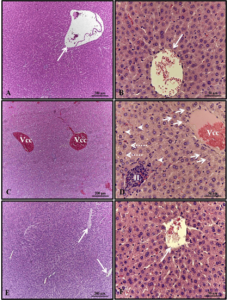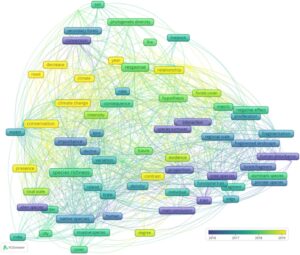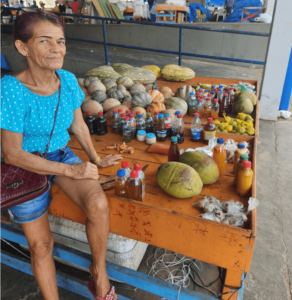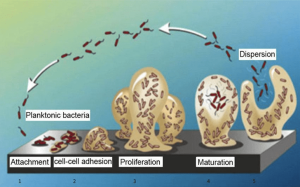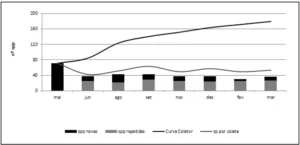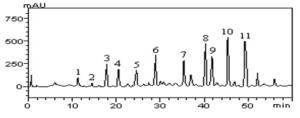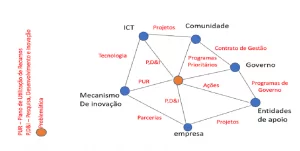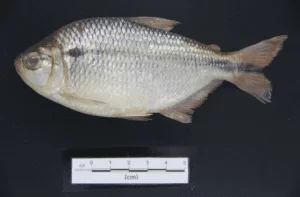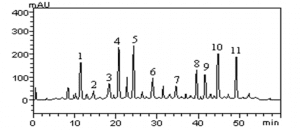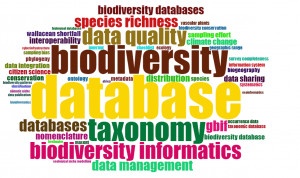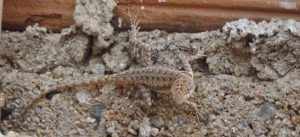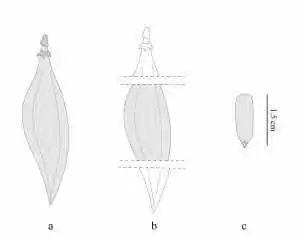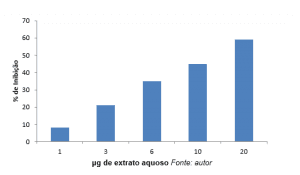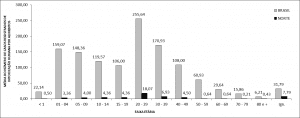ORIGINAL ARTICLE
ESPER, Amelia Pereira [1], FECURY, Amanda Alves [2], DENDASCK, Carla Viana [3], OLIVEIRA, Euzebio de [4], DIAS, Claudio Alberto Gellis de Mattos [5]
ESPER, Amelia Pereira. et al. Procedure to carry out an environmental licensing using a process for a power generation plant. Revista Científica Multidisciplinar Núcleo do Conhecimento. Year. 07, Ed. 04, Vol. 08, pp. 83-95. April 2022. ISSN: 2448-0959, Access link: https://www.nucleodoconhecimento.com.br/biology/environmental-licensing, DOI: 10.32749/nucleodoconhecimento.com.br/biology/environmental-licensing
ABSTRACT
The increase in population causes more urban areas to be built. Laws, norms, guidelines and deliberations govern the environmental licensing of an undertaking. The objective of this article is to demonstrate the procedure to carry out an environmental licensing using a process for a power generation plant and to monitor its process. A basic, qualitative and exploratory research was used with the purpose of making the problem familiar, trying to explain and clarify it. The use of instruments to clarify the lay client seems to have an effect. Visualization seems to be an attractive way of doing this. The execution of an environmental licensing goes through several stages and follows laws, norms, guidelines and deliberations that are not constant. Although there is federal regulation, each state is free to list its procedures in order to issue the license. This requires a lot of attention from the professional. Some legislative changes may negatively influence the attempt to minimize the anthropic impact on natural areas.
Keywords: Environmental licensing, Environment, Socio-environmental impacts.
INTRODUCTION
Population growth increases the demand for urbanization, since housing and work (economic activities) are socially developed in areas like this. This demand usually causes anthropic effects on the environment (SILVEIRA, 2021).
To regulate and organize the dynamics of social installation in a space there are laws, norms, guidelines and deliberations. These forms of control can generate legal penalties in case of environmental damage, and consequent damage to an enterprise/entrepreneur (FÉLIX and VIDIGAL, 2021).
The search for sustainable enterprises, both economically and from an environmental point of view, has increased the demand for professionals who know such procedures, and are capable of properly conducting an environmental licensing (SANTOS, 2021).
According to CONAMA legislation 237/97, environmental licensing is
“Art. 1º. Para efeito desta Resolução são adotadas as seguintes definições:
I – Licenciamento Ambiental: procedimento administrativo pelo qual o órgão ambiental competente licencia a localização, instalação, ampliação e a operação de empreendimentos e atividades utilizadoras de recursos ambientais consideradas efetiva ou potencialmente poluidoras ou daquelas que, sob qualquer forma, possam causar degradação ambiental, considerando as disposições legais e regulamentares e as normas técnicas aplicáveis ao caso;”
Thus, an administrative process, in which the enterprise or activity that uses natural resources, needs to ask the competent environmental agency for permission to install and operate, considering the potential risks of pollution or environmental degradation (CONAMA, 1997).
Over the years, the theme has gained strength and environmental issues are increasingly in evidence. The world shows concern about the future and an emergence of ecological awareness, a fact that gave rise to the 1st United Nations Conference on the Environment, in 1972, in Sweden; establishing some regulatory frameworks of great international relevance, which made this conference a watershed in these environmental issues. (BRAZIL, 2021)
In this historical context, in Brazil, the National Environmental Policy was created in 1981 under Law No. 6,938, which provides for mechanisms for formulating and applying the theme, also founding the National Environmental System (SISNAMA)[6] and the National Council for the Environment (CONAMA)[7] (BRASIL, 1981).
Since then, management mechanisms and instruments have been created to control activities that have significant impacts on the environment, such as the mandatory environmental licensing, ensuring more sustainable development (COSTA and ALBUQUERQUE, 2021).
According to At. 2 of Law No. 6.938, the
“Política Nacional do Meio Ambiente tem por objetivo a preservação, melhoria e recuperação da qualidade ambiental propícia à vida, visando assegurar, no País, condições ao desenvolvimento socioeconômico, aos interesses da segurança nacional e à proteção da dignidade da vida humana…”
Therefore, the construction, installation, expansion and operation of establishments and activities that use environmental resources, whether directly or with probability, in any form, of environmental impact, pollution or degradation, will necessarily depend on a prior environmental licensing (either simplified or complex) (BRASIL, 1981).
The environmental licensing process can be conducted by three scopes: Union, States or municipalities, depending on the classification and activity. However, enterprises and activities are licensed by only one of them, that is, a licensing body (COSTA and MUSARRA, 2021).
The stages of an environmental licensing process may vary depending on some classifications and criteria established in legislation, whether federal, state or municipal, as each federative entity has autonomy to create its own licensing procedures, following, of course, the guidelines of the legislation applicable. However, activities that have a potential degree of pollution or environmental degradation (low, medium or high) are subject to licensing, whether simple, integrated or complete. Although the terminologies also vary according to the licensing body, basically, there are, for the most part, three modalities: Prior License (PL), Installation License (IL) and Operating License (OL) (BRASIL, 2021).
To classify an activity subject to environmental licensing, it is necessary to understand two concepts: pollution and polluting potential. The word pollution, in its terminology, comes from the Latin “polluere” which means, in its simplicity, “to soil”, “stain” (CHEN et al., 2021). According to the National Environmental Policy, it is the degradation of environmental quality resulting from activities that, in their basic sense, cause negative and harmful impacts on human health and safety, in addition to changes in the natural conditions of the environment (BRASIL, 1981).
For the State Decree, of Minas Gerais, No. 47383 OF 03/02/2018, environmental pollution is understood by:
[…] degradação da qualidade ambiental resultante de atividades que direta ou indiretamente:
a) prejudiquem a saúde, a segurança e o bem-estar da população;
b) criem condições adversas às atividades sociais e econômicas;
c) afetem desfavoravelmente a biota;
d) afetem as condições estéticas ou sanitárias do meio ambiente;
e) lancem matérias ou energia em desacordo com os padrões ambientais estabelecidos;
f) ocasionem danos à flora, à fauna e a qualquer recurso natural;
g) ocasionem danos aos acervos histórico, cultural e paisagístico;
II – Degradação da qualidade ambiental, a alteração adversa das características do meio ambiente.
Therefore, in a more simplified way, pollution is any harmful modification caused to the environment, whether through water, air or soil (MG, 2018).
In article 3, item IV, of Federal Law no. 6,938/81, polluter is defined as “the natural or legal person, public or private, responsible, directly or indirectly, for an activity that causes environmental degradation…”(BRASIL, 1981). In this sense, it can be said that, by law, activities that cause pollution, be it in any form, are considered “anthropic activities”, excluding natural causes of pollution from the law (NETO, 2008).
Based on a potentially polluting activity (regardless of its classification), it will necessarily have to be licensed and, for that, it will be necessary to gather some basic documents to present to the licensing body and start the environmental licensing process to obtain, minimally, the prior licenses, installation and operation (CACIQUE, 2021).
For the initial stage of environmental licensing (CONAMA, 1997), the documents, projects and studies to be presented will be defined by the competent environmental agency. Among these documents for the initial phase (IBAMA, 2020), are the certificate of use and occupation of the land issued by the City Hall, grant for water resources, authorization for suppression of vegetation, which may involve, including other bodies such as the National Mining Agency – ANM[8] (BELMONT and VILLANUEVA, 2016).
Once the process has started, it is necessary to verify, with the competent body of each unit of the Federation, which subsequent procedures to be adopted. This is because, although there are rules that guide environmental licensing in Brazil, each state agency, which has licensing capacity, has autonomy to define the procedures, criteria and documents for the process (BELMONT and VILLANUEVA, 2016).
OBJECTIVE
Demonstrate the procedure to carry out an environmental licensing using a process for a power generation plant.
METHOD
The research is basic, qualitative and exploratory, and aims to make the problem familiar, trying to explain and clarify it (GIL, 2002)
An environmental licensing process was used for energy use and electric power generation from urban solid waste from a thermochemical reactor, carried out in 2018, in the state of Minas Gerais. Environmental licensing must fulfill the role of minimizing socio-environmental impacts (SANTOS and BORGES, 2019).
RESULTS AND DISCUSSION
Figure 1 shows the flowchart of the licensing process for energy use and electric power generation from urban solid waste from a thermochemical reactor. It served as a guide for preparing and joining the documents necessary for the licensing application.
Figure 1 Flowchart of the licensing process for energy use and electric power generation from urban solid waste from a thermochemical reactor
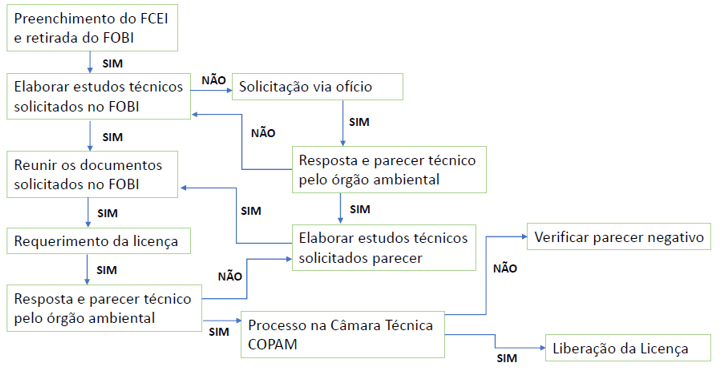
A flowchart serves to visualize the sequence of a process, and even as a guide to achieving a specific end goal. This flowchart can be presented in a variety of ways, including with a checklist where necessary. It is also an important tool to ensure the quality of the process planning, along with the checklist, serving to define and document procedures, avoiding rework and clarifying doubts during the project execution (CAMARGO, 2014).
Thus, showing a flowchart of the licensing process seems to facilitate communication between the environmental engineer and his client. A flowchart with a checklist also aims to present how and where the process can go, in addition to the possibility of identifying difficulties for better results, reducing costs and time, ensuring the quality of delivery meeting expectations (MAIA et al. , 2021).
A well-designed flowchart will allow the identification of the “step-by-step”, that is, the steps to be taken, the key agents of the process, the obstacles that may appear during the licensing process, as well as helping to reduce costs and time, aiming at continuous improvement (MEDEIROS, 2021).
The classification of the enterprise was carried out according to COPAM Normative Deliberation nº 74, of September 9, 2004 of the state legislation of Minas Gerais (Figure 2).
Figure 2 Classification of the undertaking according to the rule in effect at the time (COPAM Normative Resolution No. 74, of September 9, 2004 MG)
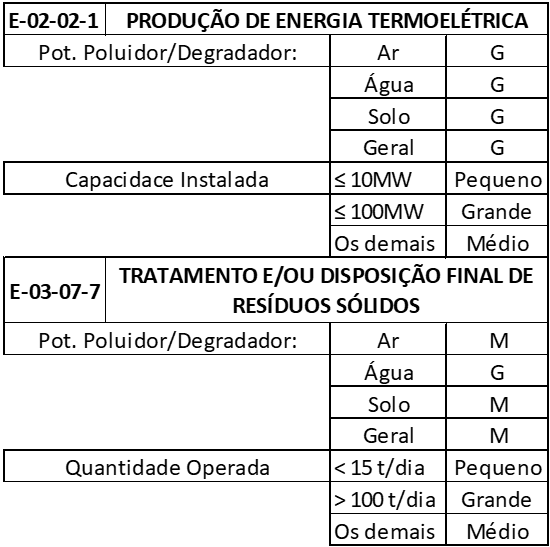
Minas Gerais state legislation, COPAM Normative Deliberation No. 74, of September 9, 2004,
“estabelece critérios para classificação, segundo o porte e potencial poluidor, de empreendimentos e atividades modificadoras do meio ambiente passíveis de autorização ambiental de funcionamento ou de licenciamento ambiental no nível estadual, determina normas para indenização dos custos de análise de pedidos de autorização ambiental e de licenciamento ambiental, e dá outras providências”
Therefore, the classification of the enterprise and its main activity is extremely relevant, as it will determine the type of environmental licensing to be carried out under the legislation of the location where it is installed or to be installed (MG, 2004).
Figure 3 shows the main differences between the legislation used (COPAM Normative Deliberation No. 74, of September 9, 2004 MG) and the legislation subsequent to it (COPAM Normative Deliberation No. 217, of December 6, 2017 MG).
Figure 3 Differences in classification based on change in legislation
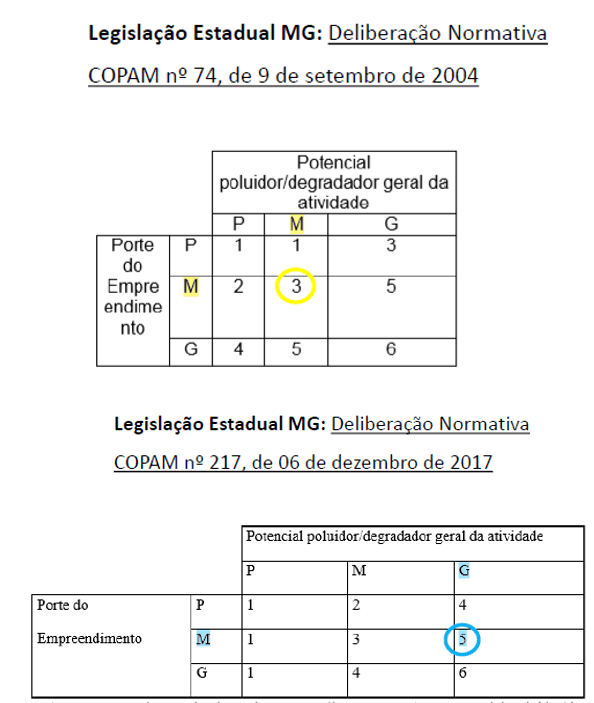
Paying attention to the classification, according to COPAM nº 74/04 in force at the time, the enterprises or activities can be classified in classes 3, 4, 5 or 6, depending on the conjugation of the degree of polluter/degrader according to potential impacts and environmental variables in physical, biotic and anthropic environments (MG, 2004).
An activity or establishment is classified as follows (MG, 2004):
I – Pequeno porte e pequeno ou médio potencial poluidor: Classe 1;
II – Médio porte e pequeno potencial poluidor: Classe 2;
III – Pequeno porte e grande potencial poluidor ou médio porte e médio potencial poluidor: Classe 3;
IV – Grande porte e pequeno potencial poluidor: Classe 4;
V – Grande porte e médio potencial poluidor ou médio porte e grande potencial poluidor: Classe 5;
VI – Grande porte e grande potencial poluidor: Classe 6.
However, an activity is considered small, medium or large, depending on its intrinsic characteristics, according to the list (A, B, C, D, E, F and G) attached to COPAM Standard nº 74/04 (MG, 2004).
Table 1. Shows the table associated with COPAM Standard nº74/04 (MG, 2004)
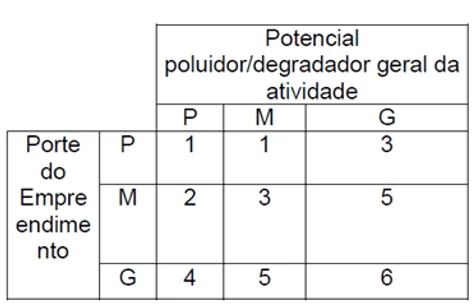
In 2016, the Brazilian state of Minas Gerais changed the rules governing the procedures for environmental licensing. It included criteria, such as interference and proximity of an enterprise to environmentally relevant areas, to classify licensable activities and enterprises. It also included the possibility of a simplified license and a simplified environmental regularization. This decision streamlined the procedure, but seems to have had a negative impact on the environmental protection of sensitive areas (RABELO, 2021).
CONCLUSION
The use of instruments to clarify the lay client seems to have an effect. Visualization seems to be an attractive way of doing this.
The execution of an environmental licensing goes through several stages and follows laws, norms, guidelines and deliberations that are not constant. Although there is federal regulation, each state is free to list its procedures in order to issue the license. This requires a lot of attention from the professional.
Some legislative changes may negatively influence the attempt to minimize the anthropic impact on natural areas.
REFERENCES
BELMONT, M. A.; VILLANUEVA, P. R. A. Procedimentos de Licenciamento Ambiental do Brasil. Brasília DF: MMA: 544p. p. 2016.
BRASIL. LEI Nº 6.938, DE 31 DE AGOSTO DE 1981. Brasília DF, 1981. Disponível em: < http://www.planalto.gov.br/ccivil_03/leis/l6938.htm >. Acesso em: 01 nov 2021.
______. O que é licenciamento ambiental? , Brasília DF, 2021. Disponível em: < http://pnla.mma.gov.br/o-que-e-licenciamento-ambiental >. Acesso em: 01 nov 2021.
CACIQUE, J. P. A. Procedimentos para o licenciamento ambiental de indústrias de beneficiamento de rocha ornamental nos estados do Espírito Santo e Minas Gerais – cenário atual. 2021. 54p. (Graduação). INSTITUTO FEDERAL ESPÍRITO SANTO, Cachoeiro de Itapemirim ES
CAMARGO, M. R. Gerenciamento de Projetos. Fundamentos e Prática Integrada. São Paulo SP: Elsevier, 2014. 256p.
CHEN, F. et al. Bioaccumulation and Transfer of Zinc in Soil Plant and Animal System: A Health Risk Assessment for the Grazing Animals. 2021. Disponível em: < https://assets.researchsquare.com/files/rs-557115/v1/fada014c-c41d-4c4c-87f8-ea636caa7a7c.pdf?c=1631884917 >. Acesso em: 01 nov 2021.
CONAMA. RESOLUÇÃO CONAMA Nº 237, de 19 de dezembro de 1997. Brasilia DF: ICMBIO 1997.
COSTA, H. K. D. M.; MUSARRA, R. M. L. M. Principais aspectos do licenciamento ambiental para captura e estocagem de dióxido de carbono no Brasil. Brazilian Journal of Development, v. 7, n. 3, p. 29468-29488, 2021.
COSTA, M. S. F. D.; ALBUQUERQUE, H. N. D. O licenciamento ambiental no Brasil e os seus desafios na proteção do meio ambiente Revista Saúde e Meio Ambiente – RESMA-UFMS, v. 12, n. 2, p. 101-115, 2021.
FÉLIX, A.; VIDIGAL, I. D. P. N. O papel do engenheiro de produção no licenciamento ambiental: o ruído emitido pela indústria em comparação ao ruído permitido legalmente – legislação atualizada. Braz. J. of Bus., v. 3, n. 1, p. 1228-1243, 2021.
GIL, A. C. Como elaborar projetos de pesquisa. 4. ed. . São Paulo SP: Atlas, 2002. ISBN 85-224-3169-8.
IBAMA. Etapas do Licenciamento Ambiental Federal. Brasília DF, 2020. Disponível em: < http://www.ibama.gov.br/laf/procedimentos-servicos/etapas-do-licenciamento-ambiental-federal >.
MAIA, B. L. S.; VILHENA, C. M.; LOUREIRO, G. E. Eficiência do processo de licenciamento ambiental na exploração minerária em Marabá: Um estudo de caso. Research, Society and Development, v. 10, n. 6, p. 1-12, 2021.
MEDEIROS, R. C. Proposição De Um Índice Para Avaliação Da Qualidade Dos Estudos Ambientais Por Meio Da Metodologia Delphi. 2021. 139p. (Graduação). Universidade Federal De Santa Catarina Florianópolis SC.
- Deliberação Normativa COPAM nº 74, de 9 de setembro de 2004. Belo Horizonte MG, 2004. Disponível em: < http://sisemanet.meioambiente.mg.gov.br/mbpo/recursos/DeliberaNormativa74.pdf >. Acesso em: 01 nov 2021.
______. DECRETO Nº 47.383, DE 02 DE MARÇO DE 2018. Belo Horizonte MG, 2018. Disponível em: < http://www.siam.mg.gov.br/sla/download.pdf?idNorma=45918 >. Acesso em: 01 nov 2021.
NETO, M. C. Impacto ambiental, degradação ambiental, poluição, contaminação e dano ambiental: Comparação entre conceitos legal e técnico 2008. 127p. (Mestrado). Universidade Estadual Paulista, Rio Claro SP.
RABELO, F. A. L. Caracterização do licenciamento ambiental em Minas Gerais e os reflexos da utilização dos critérios locacionais. 2021. 101p. (Mestrado). Universidade Federal De Alfenas, Alfenas MG.
SANTOS, L. B. D. Uma revisão bibliográfica sobre a área do licenciamento ambiental e atuação do engenheiro agrônomo 2021. 55p. (Graduação). Universidade Estadual do Rio Grande do Sul, Cachoeira Do Sul RS.
SANTOS, P. F. D.; BORGES, L. A. C. Sustentabilidade do licenciamento ambiental minerário em Minas Gerais: caso aplicado. Eng Sanit Ambient, v. 24, n. 3, p. 463-472, 2019.
SILVEIRA, P. R. D. Avaliação de impactos ambientais de um loteamento urbano no município de Palhoça/SC 2021. 121p. (Graduação). Universidade do Sul de Santa Catarina, Palhoça SC.
APPENDIX – FOOTNOTE
6. Sistema Nacional do Meio Ambiente (SISNAMA).
7. Conselho Nacional do Meio Ambiente (CONAMA).
8. Agência Nacional de Mineração (ANM).
[1] Administrator, Master in Environmental Management and Sustainable Development, Environmental Engineering (GRUPO VOTORANTIM).
[2] Biomedical, PhD in Tropical Diseases, Professor and researcher at the Campus Macapá Medicine Course, Universidade Federal do Amapá (UNIFAP).
[3] PhD in Psychology and Clinical Psychoanalysis. Ongoing PhD in Communication and Semiotics at the Pontifícia Universidade Católica de São Paulo (PUC/SP). Master’s Degree in Religious Sciences from Universidade Presbiteriana Mackenzie. Master in Clinical Psychoanalysis. Degree in Biological Sciences. Degree in Theology. He has been working with Scientific Methodology (Research Method) for more than 15 years in the Scientific Production Guidance of Master’s and Doctoral Students. Specialist in Market Research and Health Research. ORCID: 0000-0003-2952-4337.
[4] Biologist, PhD in Tropical Diseases, Professor and researcher of the Physical Education Course at Campus Castanhal, Universidade Federal do Pará (UFPA).
[5] Biologist, Doctor in Theory and Research of Behavior, Professor and researcher of the Degree Course in Chemistry at the Instituto de Ensino Básico, Técnico e Tecnológico do Amapá (IFAP) and the Programa de Pós Graduação em Educação Profissional e Tecnológica (PROFEPT IFAP).
Sent: April, 2022.
Approved: April, 2022.

